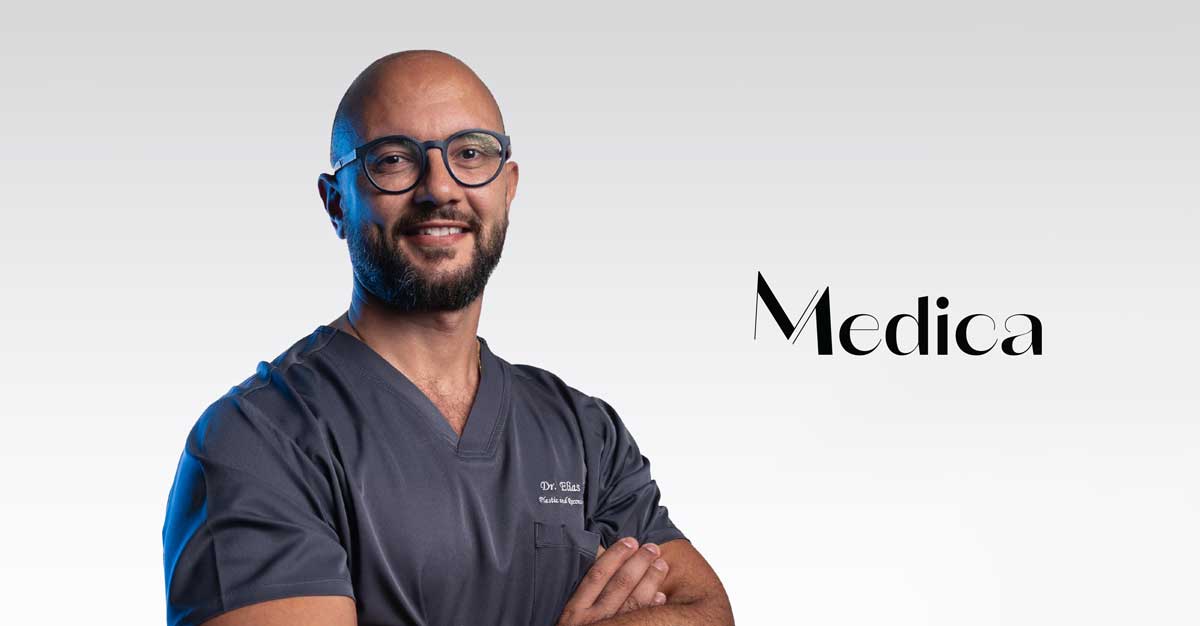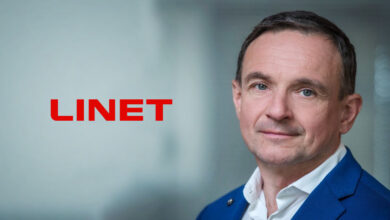Revolax™: Safety, Structure, and Stability

During an interview with ‘Hospitals’ magazine, Dr. Elias Zgheib, plastic and reconstructive surgeon, discussed Revolax™ filler, emphasizing its strong safety record and established presence in the market. He explained that, unlike many fillers that utilize biphasic hyaluronic acid, Revolax™ employs a monophasic structure where all hyaluronic acid chains are of uniform length, have greater long-term stability, and more predictable outcomes than biphasic fillers.
Could you share a concise overview of your professional journey and current focus?
I’m a plastic and reconstructive surgeon with over a decade in the field, having completed my plastic surgery studies at the American University of Beirut Medical Center. My advanced training includes plastic and reconstructive surgery, cleft work at Great Ormond Street Hospital in the UK, and trauma reconstruction at the Royal London Hospital.
For the past ten years, my focus has been on aesthetics. I’ve also been a Key Opinion Leader for injectables for about five to six years, most recently with Botulax and Revolax™, and I serve on the medical advisory board for injectables in the UAE. I am the representative for Aesthetic Plastic Surgeons of Lebanese Descent (APSLD) in the GCC region, which includes the UAE, Oman, Saudi Arabia, Qatar, and Kuwait. While my current practice is primarily cosmetic and aesthetic surgery, I continue to be involved in cleft lip with the Global Smile Foundation.
What is Revolax™, and how does it differ from other dermal fillers?
Revolax™, a hyaluronic acid dermal filler manufactured by the South Korean company Hugel (a major player in the industry), has been available since around 2017. Unlike many fillers that use biphasic hyaluronic acid, Revolax™ features a monophasic structure where all the hyaluronic acid chains are the same length. This manufacturing difference results in a more uniform consistency and, importantly, contains less of the free cross-linking agent BDDE. Consequently, Revolax™ is associated with reduced inflammation and swelling, greater long-term stability, and more predictable outcomes than biphasic fillers.
What types of Revolax™ fillers are available, and how do you choose the right one for a patient?
The success of a Revolax™ treatment hinges on a thorough consumer examination to pinpoint the areas needing filler and to select the most suitable Revolax™ type. There are three types – Fine, Deep, and Sub-Q – each with the same hyaluronic acid concentration but different levels of thickness and firmness, making them appropriate for different skin layers. The doctor’s expertise is crucial not only in choosing the right Revolax™ product for the specific treatment area and skin thickness but also in determining the correct amount and injection technique. Experience allows practitioners to achieve optimal results, sometimes even surpassing outcomes from treatments using larger quantities of filler administered by less experienced individuals.
How soon after the injection can consumers expect to see results with Revolax™?
Unlike toxins, which typically take several days to a week to show effects, dermal fillers like Revolax™ provide almost immediate results. This initial outcome represents about 80% to 90% of the final result. Over the following 10 days to two weeks, the filler integrates well with the tissues and, being hydrophilic, attracts some water, leading to a further increase of 5% to 10% in volume. The ultimate result is usually visible after about two weeks, once any injection-related swelling or bruising has subsided.
How long do the results of Revolax™ fillers typically last?
Research suggests that monophasic fillers like Revolax™ tend to last at least 20% longer than other available fillers.
The duration of filler results varies depending on the specific type used. The finer Revolax™ tends to have a shorter lifespan compared to the firmer Sub-Q, which has more cross-linking. The injected area also plays a role; for instance, lip fillers typically don’t last as long as those in the under-eye area or cheeks due to movement breaking down the filler.
Regarding downtime, there isn’t a specific recovery period. Consumers are generally advised to refrain from exercise for about 24 hours. Any downtime experienced is usually related to potential bruising from the injection itself, not the filler product.
Are Revolax™ fillers safe? What kind of testing and approvals do you have?
Revolax™ is a certified product, having passed ISO and CE testing, and is the top-selling filler in the UK. It’s distributed across 29 countries, with a production volume exceeding 30 million syringes. A key aspect of Revolax™’s safety profile lies in its distinct manufacturing process. After the initial 24-hour cross-linking, the filler undergoes a thorough two-week dialysis purification. This crucial step eliminates residual unbound materials, specifically BDDE (known to cause inflammation), and any other nonhyaluronic acid components. Furthermore, Revolax™ utilizes a sterilization technique involving high heat followed by rapid cooling, which contributes to its enhanced safety and stability. Consequently, it’s considered a very safe and pliable filler with no reported adverse bodily reactions.
How does the texture and feel of Revolax™ compare to other popular fillers?
The G prime value of Revolax™, which indicates the filler’s firmness, varies by type: Sub-Q has a G prime of 300, Deep is 200, and Fine is 100. Importantly, when injected correctly, the product does not clump and is highly moldable. This moldability is a key feature, allowing for easy adjustment if a small lump is felt after injection. The texture is such that it integrates seamlessly with the surrounding tissues, feeling natural and without causing lumps, granulomas, or other complications.
What should the consumer do before and after the procedure to ensure the best results?
All right. So, if the lady is taking any anticoagulation that can be stopped or if she is basically exercising, She should preferably stop any anticoagulation. She should not exercise the day of the procedure. Obviously, after the filler is injected, in certain areas I tell the ladies to massage it so that there’s not much swelling and so that it is distributed evenly. But then again, if the filler is injected properly in the right place and in the right amount, there shouldn’t be any issues and the results should last long.
Do you have any further thoughts or comments regarding Revolax™?
When we look at the dermal fillers available on the market, there’s a significant number of them. And it’s common to see several new fillers, at least four or five, being introduced regularly. One of the positive aspects of Revolax™ is that, despite it being a Korean product – and some people might initially have reservations about Korean beauty products, the reality is quite different. Korea has an exceptionally high standard of aesthetics. I visited there a couple of months ago, and the level of advancement in this field is unparalleled globally.
While perhaps earlier technologies weren’t as advanced, Korea now possesses the leading technology worldwide. So, in terms of product development and manufacturing, Revolax™ is extremely safe and has been on the market for a considerable time. From a practitioner’s perspective, I appreciate Revolax™ because I haven’t observed any adverse reactions in my consumers, it is safe and gives me reproducible and controllable results. This isn’t the case with all fillers; some don’t respond well to manipulation and are difficult to control after injection. So, overall, I have a genuine positive opinion of Revolax™.














